Boston University and Boston College are not the same thing, right? People often become puzzled. They are two distinct organizations, however; they have the same goal of giving their students a top-notch academic experience.
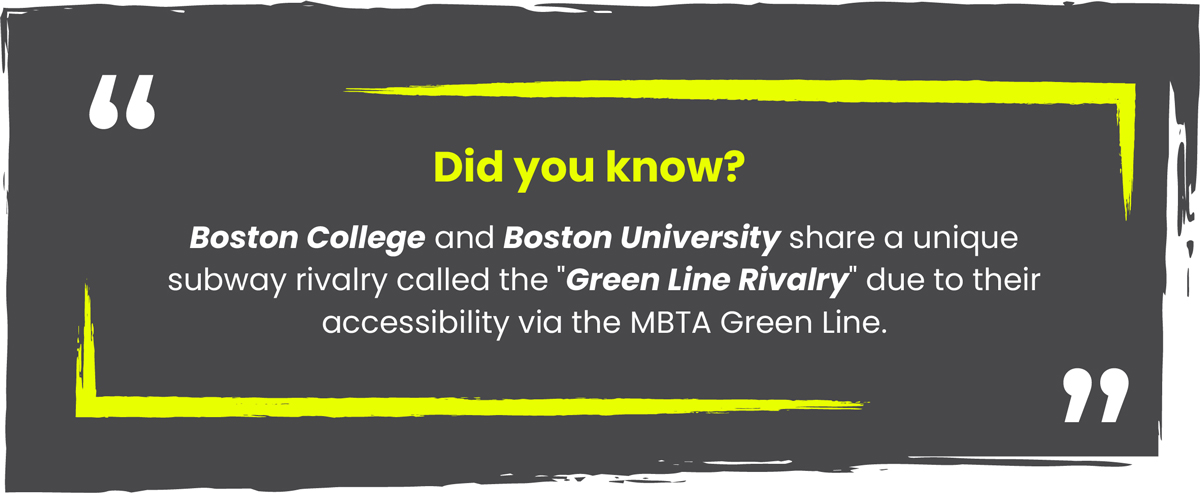
In this blog post, we’ll dive into the unique characteristics of Boston College and Boston University to help you make an informed choice. Choosing the right college will shape your academic experiences, personal growth, and future opportunities.
Boston, Massachusetts, boasts two prestigious institutions. Boston College and Boston University offer endless possibilities.
So, let’s get started.
Overview of Boston College and Boston University
Boston College versus Boston University
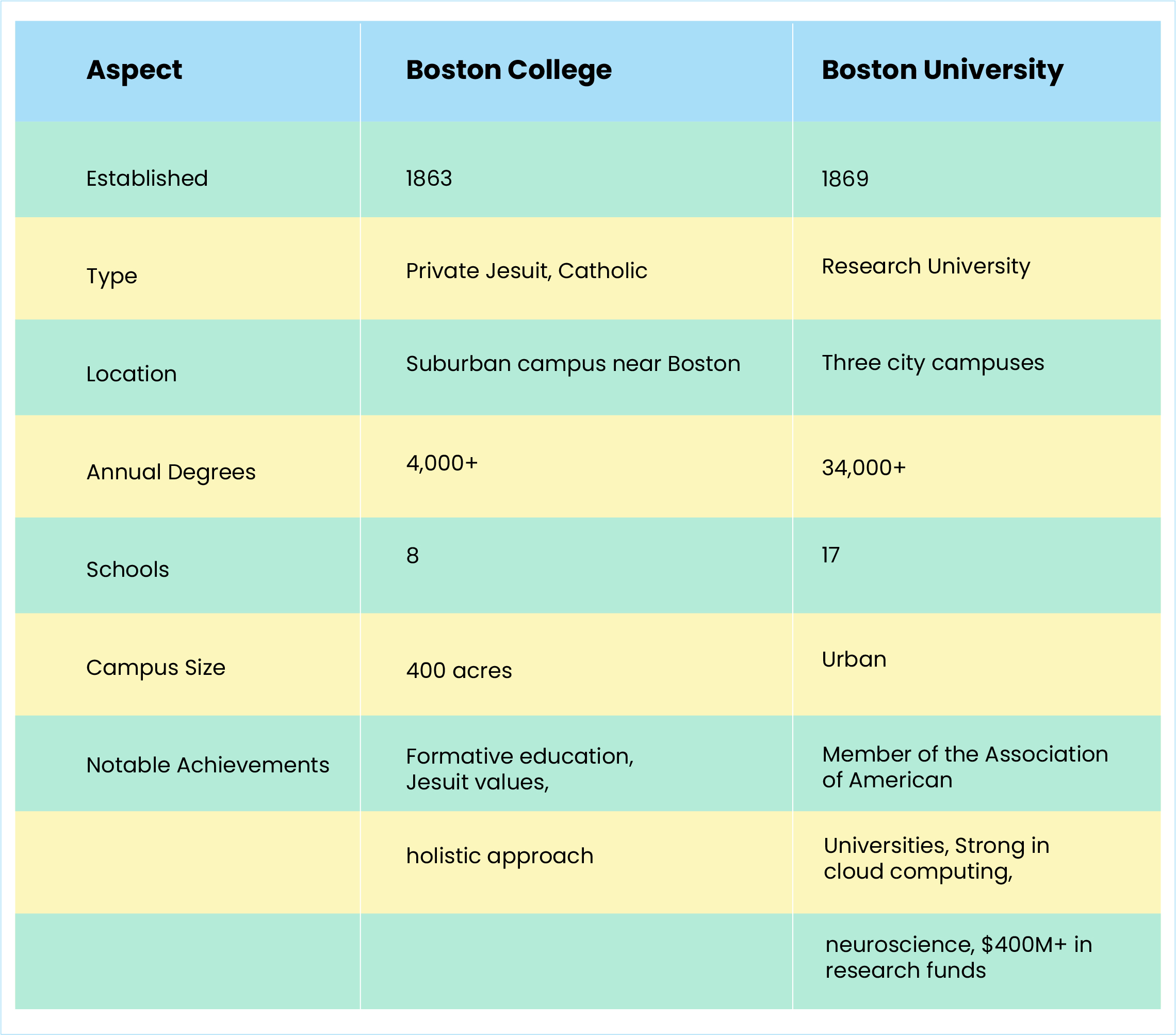
Location and Campus
Boston College, situated in Chestnut Hill, west of downtown, boasts a sprawling 340-acre campus that fosters a strong sense of community. With 29 residence halls and 13 dining options, 85% of students reside on campus, promoting a vibrant living-learning environment. The rest live nearby, connecting with both Chestnut Hill and Boston neighborhoods.
Nestled at the heart of Boston, Boston University’s urban campus is strategically divided by the Charles River into a main academic hub and a west campus dedicated to athletics. Encompassing 135 acres, this dynamic setting ensures immediate access to the city’s cultural and professional offerings. BU offers diverse housing options, ranging from classic dormitories to apartments and the John Hancock Student Village. Through a lottery system, students rank their preferences, with 75% residing on campus, contributing to a vibrant campus atmosphere.
Boston College and Boston University share a unique subway rivalry called the “Green Line Rivalry” due to their accessibility via the MBTA Green Line. However, they offer distinct campus experiences.
Academic Programs
Boston College and Boston University Academic Programs
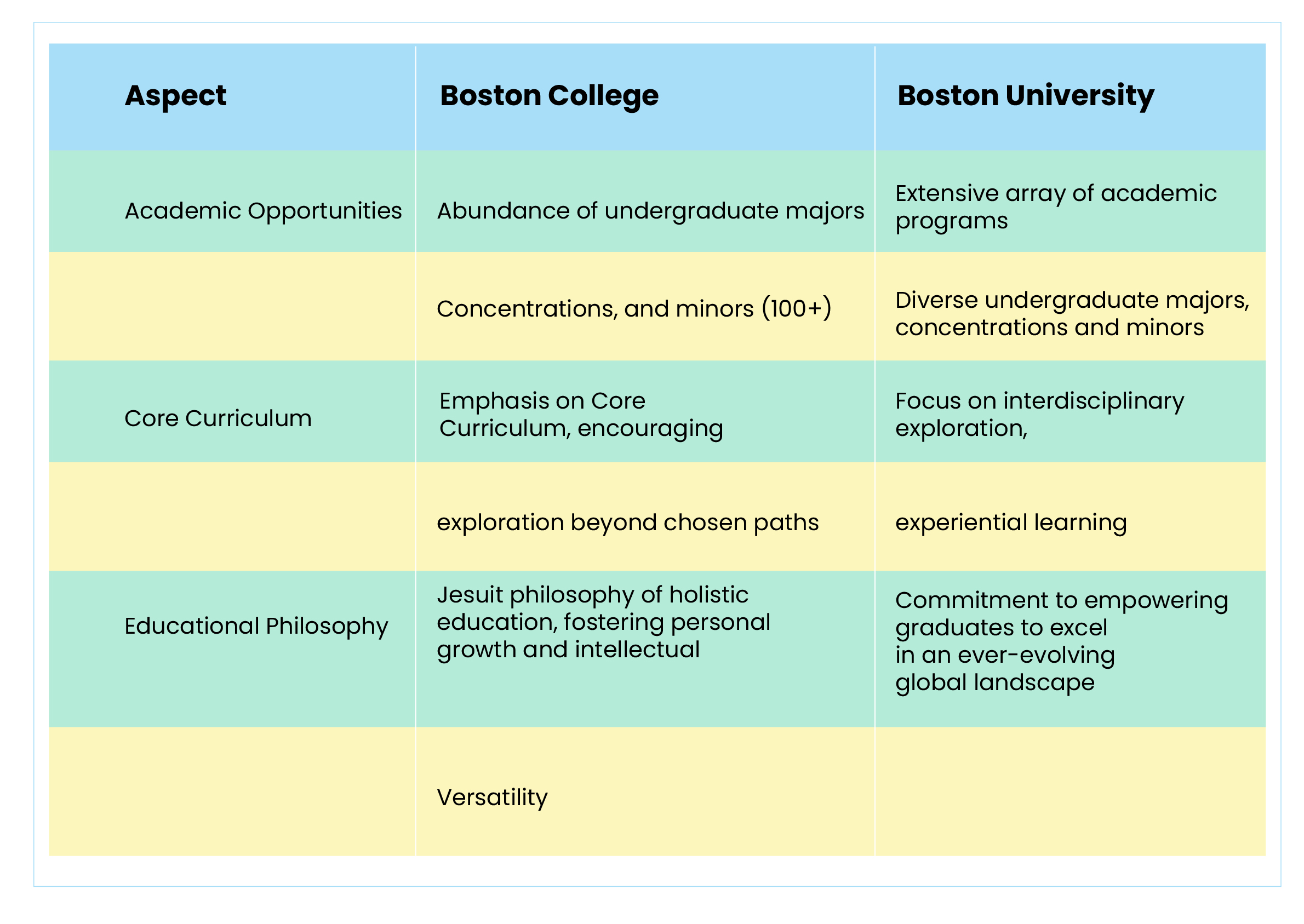 Admissions
Admissions
Boston College’s acceptance rate: 26%
Required SAT Score: 1320-1490
Required ACT Score: 33-34
Boston College maintains a highly selective admissions process, with a 26% acceptance rate. Successful applicants typically exhibit strong standardized test scores, as half fall within SAT ranges of 1320-1490 or ACT ranges of 33-34. Furthermore, a quarter of admitted students surpass these ranges, while another quarter score below.
The application deadline is January 1, accompanied by an $80 fee. BC’s rigorous selection criteria highlight its commitment to assembling a diverse and accomplished student body.
Boston University’s acceptance rate:14%
Required SAT Score: 1360-1520
Required ACT Score: 31-34
Boston University maintains a rigorous admissions process, with an acceptance rate of 14%. Successful applicants often possess strong standardized test scores, with half falling within SAT ranges of 1360-1520 or ACT ranges of 31-34. Moreover, a quarter of admitted students exceed these ranges, while another quarter fall below.
The application deadline is January 4, accompanied by an $80 fee. BU’s competitive criteria underscore its commitment to forming a diverse and accomplished student community.
Boston College Versus Boston University
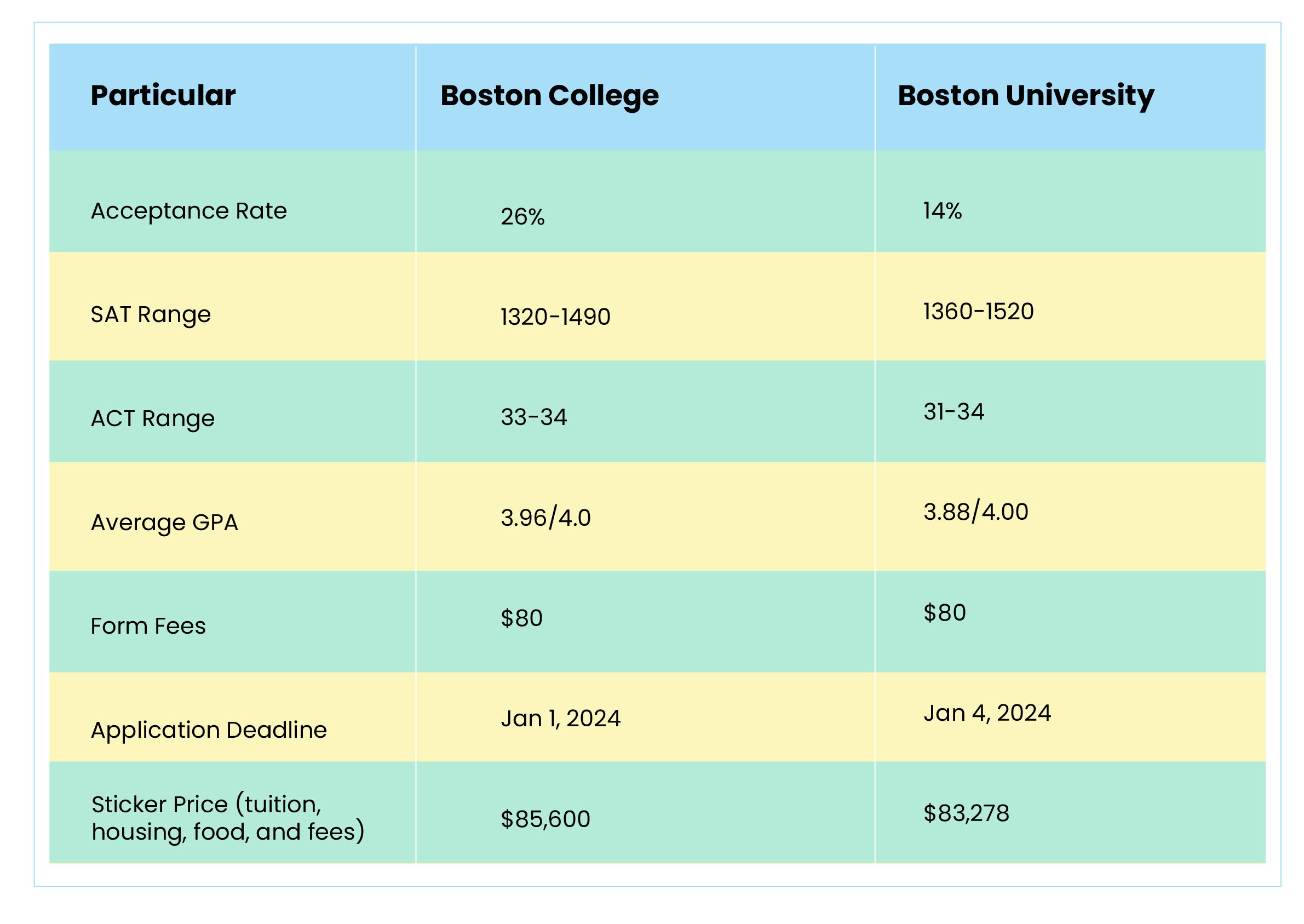
Financial Aid
Boston College prioritizes addressing the financial needs of its undergraduate students, ensuring 100% coverage. The majority of aid awarded is based on demonstrated need, benefiting 66% of undergraduates. In the 2020-2021 academic year, the average need-based scholarship/grant was $46,777.
For the 2022-2023 academic year, Boston College’s sticker price stands at
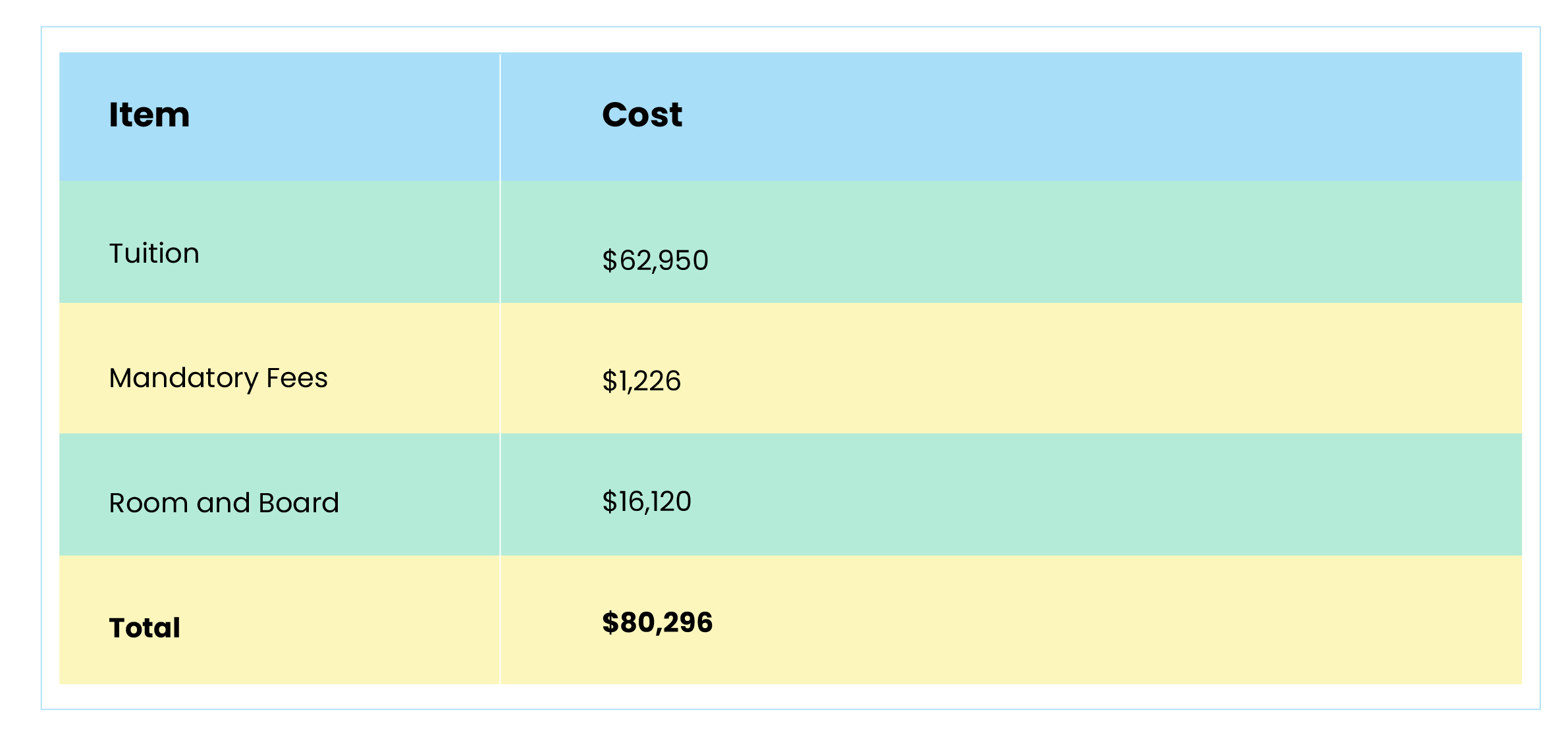
Boston University is committed to supporting its domestic students by fully meeting their financial needs since 2020. About 46% of BU undergraduates benefit from institutional aid, with an average grant of $36,703. Need-based aid constitutes 92% of BU’s financial assistance, while the remaining 8% is granted based on merit. This comprehensive approach underscores BU’s dedication to making education accessible and ensuring students thrive academically and beyond.
For the 2023-2024 academic year, the sticker price at Boston University is
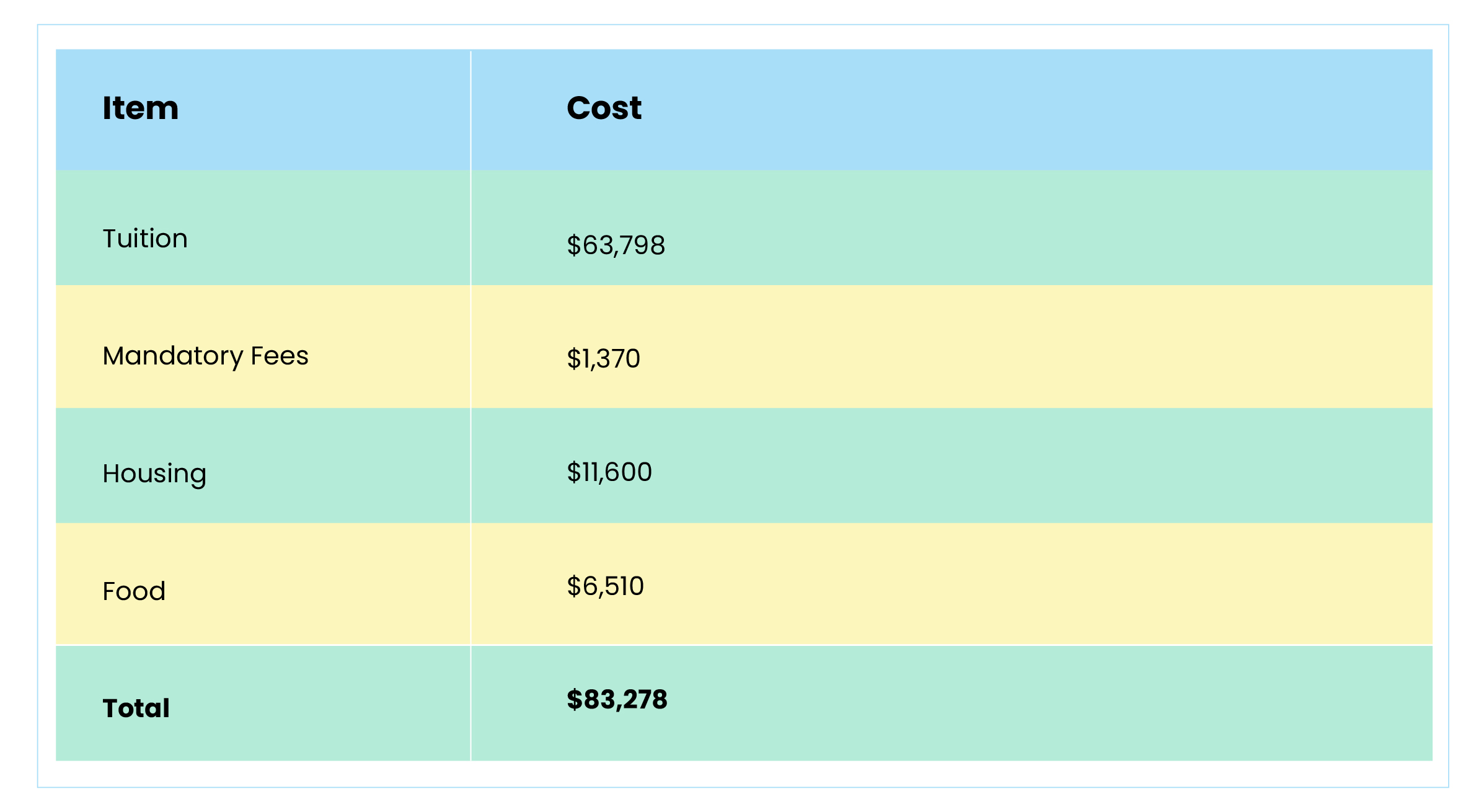
Culture and Ethnicity
CONCLUSION
If you’re considering Boston College, it’s an ideal fit for those who desire access to city life while enjoying a suburban atmosphere. The significance of Saturday football games, a Jesuit education, and a tight-knit campus community resonate with you. Boston College’s distinguished Baptist library and extensive alumni network are also appealing, especially for business majors.
Conversely, Boston University is a standout choice if living in the city’s heart appeals to you. The university’s large-scale experience, high employability of alumni, and emphasis on diverse campus life align with your preferences. With a wide array of study abroad programs, abundant internship opportunities, and a strong focus on research, Boston University caters to your career-oriented and globally-minded aspirations.
As you weigh your options between Boston College and Boston University, consider your academic aspirations, preferred campus environment, and personal goals. Visit both campuses, explore the programs, and reach out to current students to gain insights. Remember, choosing the right college isn’t just about prestige—it’s about finding the place where you’ll thrive academically, socially, and personally.
Moonpreneur is on a mission to disrupt traditional education and future-proof the next generation with holistic learning solutions. Its Innovator Program is building tomorrow’s workforce by training students in AI/ML, Robotics, Coding, IoT, and Apps, enabling entrepreneurship through experiential learning.




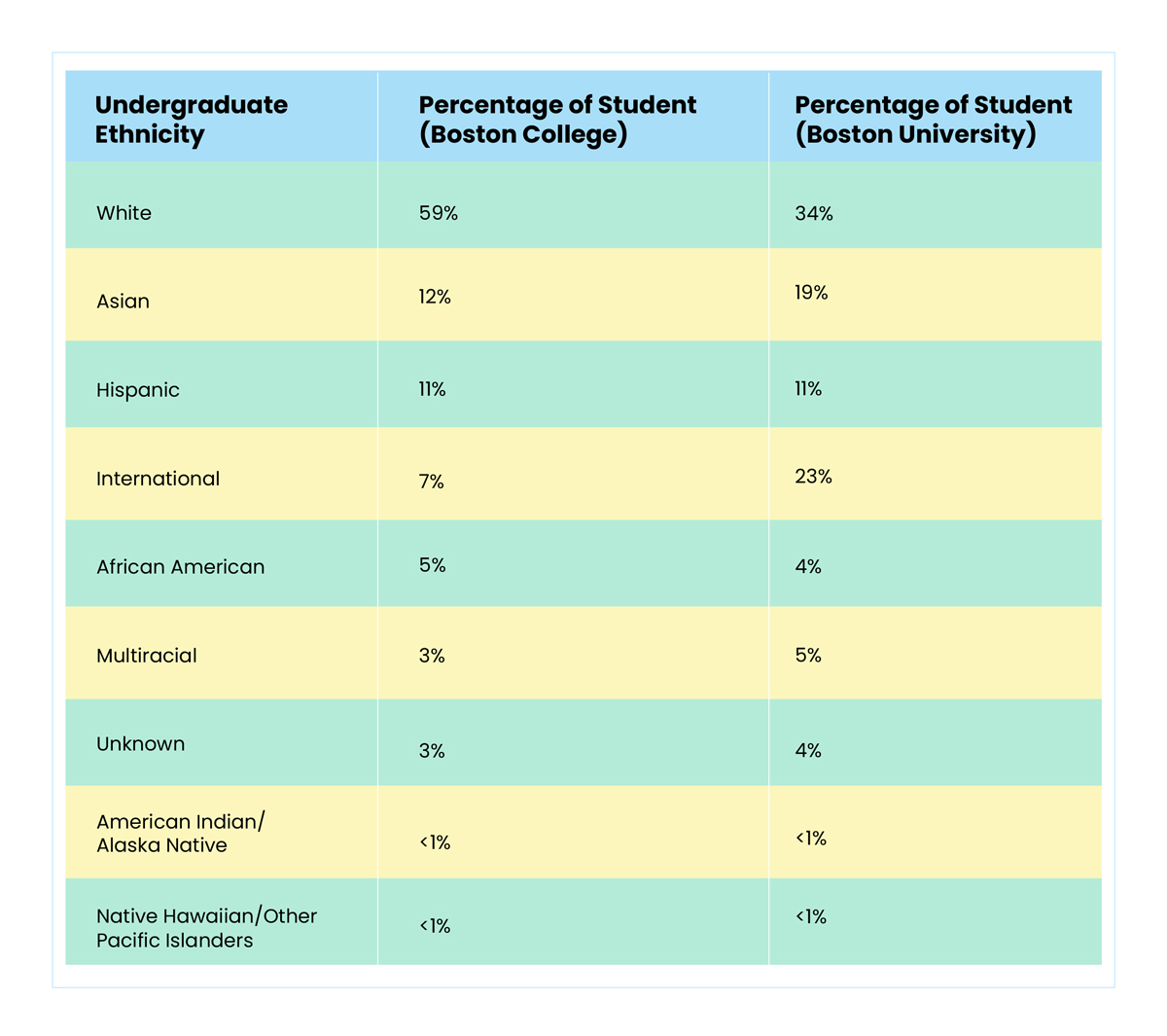




















Do you prefer Boston College’s tight-knit community or Boston University’s bustling urban environment?
I cherish Boston College’s close-knit community for its warmth and support, fostering meaningful connections and personal growth.
Are you more inclined towards Boston University’s research-focused environment or Boston College’s emphasis on a holistic education
I lean toward Boston University’s research environment, valuing its innovation-driven atmosphere and opportunities for academic exploration and growth.